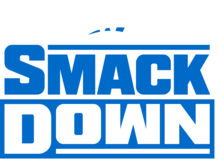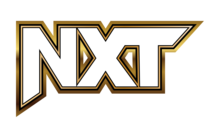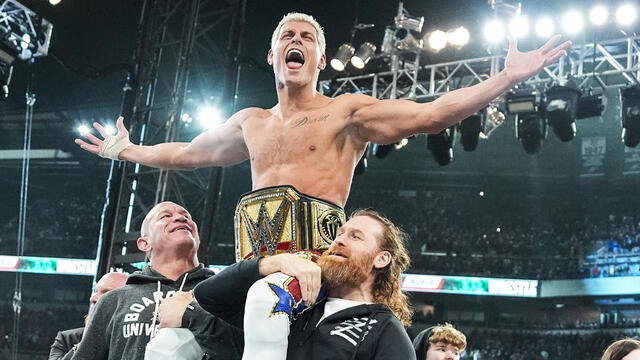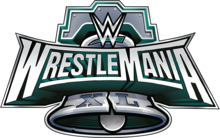
Guilty as Charged: Remembering the final ECW pay-per-view
It has been 12 long years since the original ECW has presented a pay-per-view. When the final one, Guilty as Charged, was broadcast on Jan. 7, 2001, fans had no idea they were witnessing the end of an extreme era. In fact, advertisements for the next pay-per-view, Living Dangerously, were broadcast during the show. Yet while the hardcore faithful were unaware that their beloved organization was teetering on the brink of bankruptcy, the competitors who were shortchanged on their paychecks night after night knew the end was in sight.
( RARE PHOTOS | VIDEO HIGHLIGHTS)
“To me, it was the end, and I was calling the final ECW show,” commentator Joey Styles told WWE Classics. “I knew we were completely out of money. We borrowed money from everybody we could, including Acclaim video games and Original San Francisco Toymakers. The death knell was that there was going to be no Hardcore TV the following week. There was no money left to pay talent, no money left to rent buildings and no money left to pay the production team. It was over.”
Two years earlier, at the first Guilty as Charged show in 1999, ECW was at the height of its popularity as the alternative third brand to WWE and WCW. Paul Heyman opened the broadcast speaking directly through the camera to the audience at home, explaining changes to the evening’s lineup of matches. It was rare for the owner of a company to be that open and honest.
“The key to everything was our credibility with the audience,” Heyman told WWE Classics. “As long as they had reason to believe us, and believe in us, we maintained a relationship neither WWE nor WCW could enjoy. We never violated a stipulation. We offered refunds when there was a substitution. So when our pay-per-view lineup had to change, I didn't think twice about it. I was going to address our audience, tell them the truth and assure them the changes would end up being for the better.”
Styles agreed. “That’s how ECW was. We valued our fans above everything else,” The Extreme Announcer said. “They were as much a part of ECW as any of the performers.”
That show in 1999 also set a tone for Guilty as Charged being home to endings and new beginnings. In the main event, the first-ever ECW Champion Shane Douglas defended the title against rising star Tazz.
“If you look back at the history of the original ECW, the two greatest ECW Champions were, without question, Shane Douglas and Tazz,” Styles said.
Heyman knew it was Tazz’s moment. “I look at Tazz winning the ECW World Title from Shane Douglas as the logical progression of the championship,” the ECW mastermind explained. “It wasn't so much a passing of the torch, as Shane had been surpassed by both Tazz and ECW World Television Champion Rob Van Dam as the top attraction for quite some time already. The ECW Title belonged on Tazz.” ( WATCH)
Two years later, the organization was on its last legs. Guilty as Charged 2001 was the second consecutive ECW pay-per-view to be held at New York City’s Hammerstein Ballroom, located across the street from Madison Square Garden in a building called the Manhattan Center. Upstairs from the Hammerstein Ballroom is a much smaller room called the Grand Ballroom, which held the first episodes of Raw. But the larger room was becoming something of a second home to ECW outside of Philadelphia’s ECW Arena.
“The Hammerstein Ballroom was magical,” ECW icon Tommy Dreamer said. “We always had a great relationship with New York. We had the Lost Battalion Hall and the Elks Lodge in Queens, but Hammerstein was a big step for us.”
ECW’s new home in The Big Apple meant a lot to Heyman, a New York native.
“It was a major league venue, in the heart of Midtown Manhattan,” the ECW owner said. “And yet, it had the same feel to me as the ECW Arena during the height of the promotion. It was intimate enough to maintain our aura, and large enough to turn a tremendous profit and fund the company. Had ECW continued operations, the Hammerstein was going to become our base.”
In the later days of ECW, veterans kept the company going while also paving the way for new stars. At the 2001 event, Tommy Dreamer battled CW Anderson in an “I Quit” Match. Anderson had joined ECW in 1999, and instantly earned Dreamer’s respect.
“[He] was a great competitor,” Dreamer said. “That ‘I Quit’ Match was one of my favorite matches. It was brutal, it was different and I was beyond pleased with that match. The world got to see what a great talent CW Anderson was.”
Another man who debuted in ECW in 1999 was a young, intense competitor named Rhyno. “A kid from Detroit,” as he referred to himself in a conversation with WWE Classics, Rhyno became an instant sensation by becoming an antagonist to the top stars in The Land of Extreme.
“Paul knew immediately that Rhyno had something,” Styles said. “He handed Rhyno the ball, and Rhyno scored like a fullback that nobody could stop.” ( MORE RHYNO)
Rhyno was ready for the opportunity. “Paul knew maybe I wasn’t a main-event guy then,” The Man Beast admitted. “But I could give the crowd a main-event match.”
Heyman also recognized that Rhyno was a student of the game who was eager to learn.
“To be honest with you, you learn how to be a performer by driving in cars with other wrestlers on the road, not in the ring.” Rhyno told WWE Classics. “That’s where you really learn the wrestling business, doing five-, six-, 10-hour drives.”
Rhyno’s first big rivalry was with ECW’s Hardcore Icon, The Sandman.
“I loved wrestling Sandman,” Rhyno said. “He really wanted to wrestle me because he saw my potential. He knew I wanted to go out there and work hard. That’s the rivalry that really put me on the map.” ( MORE SANDMAN)
The battle became personal at Hardcore Heaven on Mother’s Day in 2000 when Rhyno delivered a piledriver to Sandman’s wife from the ring apron through a table on the floor. The following month, The Man Beast won the ECW World Television Championship, and there was no stopping him.
In the scheduled main event of Guilty as Charged 2001, The Sandman won the ECW World Championship for a record fifth time when he defeated Justin Credible and defending champion Steve Corino in a Tables, Ladders, Chairs & Canes Elimination Match. ( WATCH) Immediately after Sandman’s victory, Rhyno, who was still ECW World TV Champion, entered the ring and defeated The Sandman for the ECW World Title in a brief, impromptu matchup. The usually unflappable New York City fans were stunned, but excited by the potential of this dangerous new champion. ( WATCH)
“Had he been champion for longer, Rhyno would be held at the same level as Tazz, Shane Douglas, Raven and Sandman as one of the greatest ECW Champions,” Styles declared. “But at the end, there wasn’t a roster left in ECW for Rhyno to beat to rise to that level. You’re only as good as your competition. Unfortunately, Rhyno just came to ECW a little late.”
If ECW continued, the new champion would have had his work cut out for him in title defenses against the organization’s most awe-inspiring hero.
“We were setting up Rhyno being challenged by Rob Van Dam in 2001 for the ECW World Heavyweight Championship,” Heyman explained. “RVD never received a World Title Match during his entire tenure in the original ECW. It was time to pull the trigger on what would have undoubtedly been our greatest-drawing match ever.”
But ECW never got that shot.
The final ECW pay-per-view match in history occurred immediately after Rhyno won the title, when Rob Van Dam battled Jerry Lynn.
“RVD had been gone for a few months with an injury, and this was his surprise return,” Heyman said. “There was no better way to put the main event spotlight right back on RVD than to pit him against his greatest opponent, in a match that was designed to showcase everything the audience loved about Rob Van Dam.” ( WATCH)
It was the main event, but the match almost didn’t happen.
“There was a big controversy based on money between Jerry Lynn, Rob Van Dam and Paul Heyman about doing that final show,” Dreamer said. “Jerry didn’t even bring his boots because he was owed so much money. I believe he used Scotty Riggs’ black boots and black biker shorts for that match.”
With disputes settled at the last possible moment, Van Dam and Lynn hit the ring in front of 2,500 rowdy fans, and blew the crowd away in an exhausting, physical battle that lasted nearly 30 minutes. As the show ended on a victorious RVD celebrating his victory, it certainly didn’t appear that ECW was finished. With a new champion crowned and momentum in The Whole Dam Show’s favor, the table was set for Living Dangerously, which was scheduled to air in two months on pay-per-view.
“There was a sense that we were nearing the end at every show we had,” Dreamer said. “The saddest part of ECW going out of business is that we were still drawing great crowds.”
Some stars didn’t think it was over for good.
“After Guilty as Charged, Paul said he was just going to take a little break, regroup and come back with me vs. Rob,” Rhyno explained. The last ECW Champion didn’t have to wait, though, especially after the way he found out about the company’s closing: “WWE called and offered me a contract.” ( WATCH RHYNO IN WWE)
Just weeks after Rhyno’s moment of glory and the tremendous success of Guilty as Charged, ECW announced that Living Dangerously — originally scheduled to air on pay-per-view in March — had been canceled.
“I never believed in my heart Living Dangerously wouldn’t happen until about 12 days before the event, when we had to secure the satellite time and just could not afford it,” Heyman revealed to WWE Classics. “At that point, I knew we were going down. And yet, I still hoped for a last-moment miracle, which had happened for us several times before.”
That miracle never came and on April 4, 2001, Paul Heyman filed for bankruptcy, signaling the official end to ECW.
That same spring, a season usually evocative of blossoming beginnings and growth, was a pivotal period for the wrestling industry. Not only did ECW close its doors, but Ted Turner’s onetime powerhouse WCW also went under. After Turner’s Time Warner–owned company merged with AOL, Nitro was canceled and WWE purchased the organization for pennies on the dollar. Soon after, WWE acquired ECW, too, and the only thing that blossomed in spring 2001 was a tape library in Stamford, Conn.
The big question is: What happened to Rhyno’s two ECW titles?
“The TV Title was stolen out of the locker room,” Rhyno said, but he wasn’t specific about the location of the other championship. “The Heavyweight Title is in my house. It’s not on display. It’s not in a safe. It’s not in the toilet. Let’s put it this way: It’s in proper ECW form. It’s hardcore.”
WWE Shows Latest Results
Raw results, April 15, 2024: Chad Gable viciously attacks Sami Zayn after losing to Zayn in Intercontinental Title Match!
Full ResultsSmackDown results, April 12, 2024: LA Knight and AJ Styles earn victories for a chance to challenge Cody Rhodes at WWE Backlash!
Full ResultsWWE NXT results, April 16, 2024: Trick Williams defeats Carmelo Hayes in a Steel Cage Match
Full Results

















